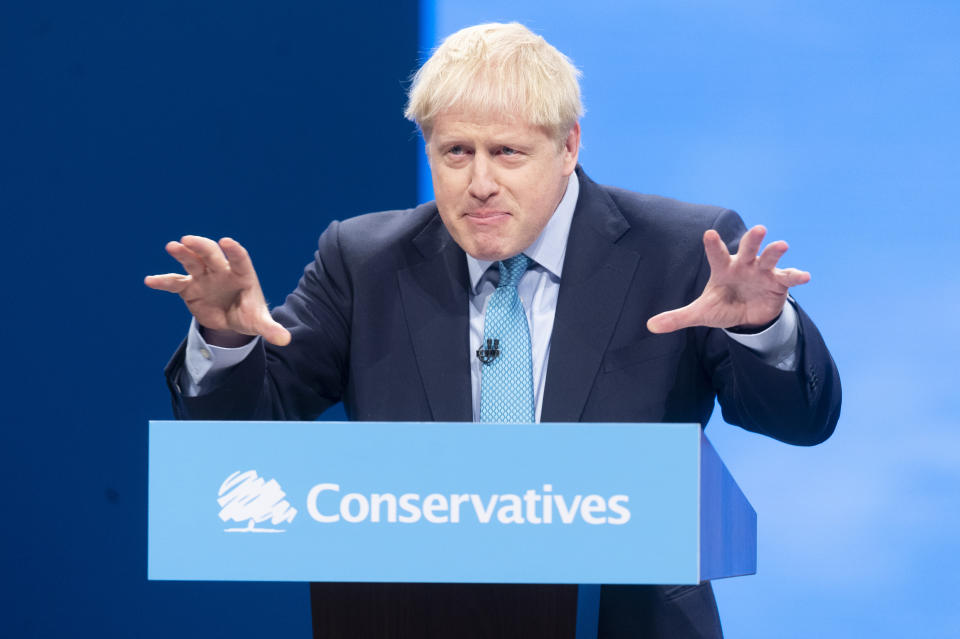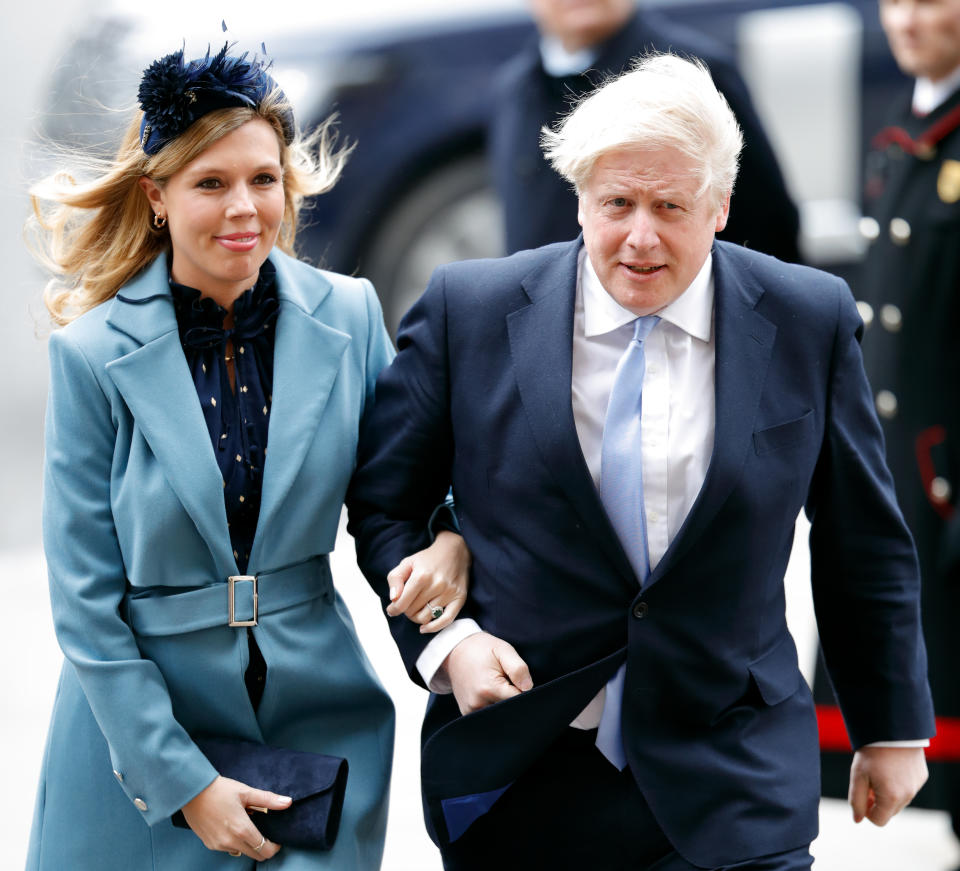Boris Johnson in intensive care with coronavirus, what could this mean?
Boris Johnson has been taken to intensive care after his coronavirus symptoms worsened.
The prime minister tested positive for the infection 10 days ago after developing its tell-tale fever and cough.
Johnson claimed his symptoms were “mild” and he would continue to virtually lead the government’s fight against the coronavirus outbreak while self-isolating.
A spokesperson announced the 55-year-old father-to-be was admitted to hospital on Sunday evening for “precautionary tests” as a result of his “persistent symptoms”.
After tweeting he was in “good spirits” on Monday, a 10 Downing Street spokesperson confirmed Johnson was moved to intensive care at St Thomas’ Hospital that afternoon when his condition took a turn for the worse.
He is said to be conscious and does not yet require a ventilator to help him breathe.

Why would Boris Johnson require intensive care for the coronavirus?
Early research suggests the infection is mild in four out of five cases, however, some patients develop a respiratory disease called COVID-19.
Pneumonia is the most commonly reported complication.
This occurs when an infection spreads from the airways to the air sacs (alveoli) in the lungs, where gas exchange takes place.
Latest coronavirus news, updates and advice
Live: Follow all the latest updates from the UK and around the world
Fact-checker: The number of COVID-19 cases in your local area
Explained: Symptoms, latest advice and how it compares to the flu

The alveoli become inflamed and filled with fluid or pus, making it difficult for the lungs to draw in air.
In severe cases, this can lead to life-threatening respiratory failure.
This comes about when oxygen levels in the blood fall to a dangerously low level and carbon dioxide accumulates.
Early in March, doctors working in two hospitals in Wuhan, China, released information on 191 patients with confirmed coronavirus. Fifty-four of these patients died. Wuhan was the initial epicentre of the outbreak.
Nearly all (98%) of the fatalities developed respiratory failure compared to 36% of the survivors.
All of the deceased also had sepsis, versus less than half (42%) of the survivors.
Sepsis occurs when the body over-reacts to an infection, releasing excessive amounts of virus-fighting chemicals that can damage multiple organ systems.

What treatment could Boris Johnson be receiving for the coronavirus?
The coronavirus has no “set” treatment, with most people’s immune system naturally fighting off the infection.
If a patient requires hospitalisation, they are given supportive care – like ventilation – while their immune systems gets to work.
“It seems clear the prime minister went to hospital because he had difficulty breathing,” said Professor Derek Hill from University College London.
“It seems he was initially put on oxygen and was conscious.
“We understand the PM is on a type of breathing support called continuous positive airway pressure (CPAP), which is commonly used in treatment of obstructive sleep apnoea.
“Experience in Italy and other European countries has shown CPAP can be effective in COVID-19 patients, at least initially”.
CPAP pumps air through a mask, holding the respiratory tract open. Sleep apnoea occurs when the muscles in the throat relax and narrow while a person sleeps.
“Many COVID-19 patients progress to invasive ventilation,” said Professor Hill.
Around two-thirds of patients require a ventilator within 24 hours of being admitted to intensive care, the BBC reported.
Last night, on the advice of my doctor, I went into hospital for some routine tests as I’m still experiencing coronavirus symptoms. I’m in good spirits and keeping in touch with my team, as we work together to fight this virus and keep everyone safe.
— Boris Johnson #StayHomeSaveLives (@BorisJohnson) April 6, 2020
Coronavirus: Why are ventilators required?
Ventilators can either be non-invasive – when a mask is placed over a patient’s nose and mouth, or invasive – a tube down their throat.
COVID-19 patients may require “help breathing for over a week”, according to Professor Hill.
“Intensive care ventilators have sophisticated software and sensors to enable them to adjust the way they work around the needs of the patient, and to change the amount of oxygen inhaled with the air,” he said.
“There is no doubt this turn of events means Boris Johnson is extremely sick”.
Professor Hill previously explained how patients who require assistance breathing may “manage with the help of oxygen”, while those with more serious difficulties “end up being put on a ventilator that breathes for them”.
“This can involve heavy sedation and sometimes the patient needs to be paralysed,” he said.
When asked what tests the prime minister may have previously undergone, Dr Rupert Beale from the Francis Crick Institute said: “Doctors will be monitoring important vital signs such as oxygen saturations.
“They will also check blood tests to see what the immune response to the virus looks like, and to assess liver and kidney function.
“They will perform an electrocardiogram (ECG) to check the heart.
“More sophisticated tests may include a CT scan of the chest to get an accurate picture of the lungs.”
Based on these results, medics decide the best way to deliver oxygen, added Dr Beale.
Dr Bharat Pankhania from the University of Edinburgh said: “The plan is to enable oxygen exchange, enable the lungs to recover, and whilst they are recovering we give a much higher does of oxygen to them as a tool to assist with keeping patients adequately oxygenated and prevent damage to other organs too.”
Professor Mike Grocott, vice president of the Royal College of Anaesthetists, stressed “being in an intensive care unit isn’t all about being on a ventilator”.
“Intensive care is where life support takes place,” he said.
“Medical teams within intensive care units will always carefully assess as to when, and whether the use of full ventilation support is needed for any patient.
“A skilled team will carry out all procedures necessary including intubating the patient’s windpipe and inserting tubes or catheters into veins and arteries in order to enable second-by-second monitoring and support the administration of complex drugs.
“In extremely serious cases, the use of an extracorporeal membrane oxygenation machine (like a heart lung machine used for cardiac bypass surgery) takes over some of the function of the lungs”.
Professor Linda Bauld from the University of Edinburgh called the prime minister’s admission to intensive care a “huge concern”, claiming it “illustrates just how indiscriminate this virus is”.
Dr James Gill from Warwick Medical School added: “We do not have enough information to speculate about the condition of Mr Johnson.
“He is just another patient who is currently running the marathon of the COVID-19”.
Virtually unheard of at the start of the year, no one who has immunity to the coronavirus unless they have already overcome the infection.
The vast majority of deaths worldwide are in the elderly or already ill.
Johnson is not thought to have any pre-existing health conditions.
The coronavirus’ death rate is unclear, however, only those who develop complications are thought to be succumbing to the infection.
Only hospitalised patients are routinely being tested for the coronavirus in the UK, with these patients being severe by definition.
This skews the death rate, with milder cases in the community not being included in the calculations.
On a global scale, fatality rates also vary according to the country’s health infrastructure.
The World Health Organization’s director-general Dr Tedros Adhanom Ghebreyesus said on 4 March the coronavirus had killed 3.4% of patients globally.
Other experts were quick to call this a likely “overestimate”, adding 1% seemed more “reasonable”.
Scientists from the University of Hong Kong later pegged it at 0.3% for people under 30, 0.5% for those aged between 30 and 59, and 2.6% for people aged 60 or above.
Overall, they calculated the fatality rate to be 1.4%.



